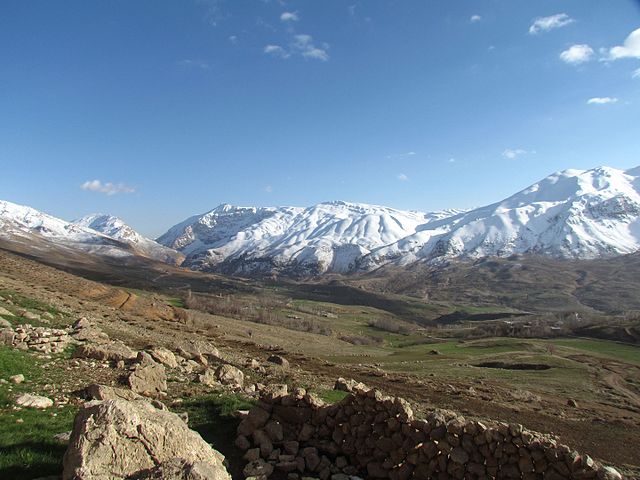Top Qs
Timeline
Chat
Perspective
Zard-Kuh
From Wikipedia, the free encyclopedia
Remove ads
Zard-Kuh (meaning "Yellow Mountain", also spelled Zardkuh, Zarduh Kuh[2] or Zard Kuh-e Bakhtiari; Persian: زردکوه بختیاری) is a sub-range in the central Zagros Mountains, Iran.

With an elevation of 4,221 metres (13,848 ft), its highest peak "Kolonchin" is located in the Kuhrang County, in the Chaharmahal and Bakhtiari province of Iran.[3] The Karun and also Zayanderud rivers originate in the Zagros Mountains near the Zard-Kuh. There are small glaciers on the mountain owing to the relatively high precipitation, which are the only glaciers in the subtropics outside the Himalayas, Andes and Trans-Mexican Volcanic Belt.[4]
Geologically, the Zard-Kuh is situated in the Sanandaj-Sirjan geologic and structural zone of Iran and is mainly made of Cretaceous limestone.[5]
The documentary Grass captures on film the Bakhtiari tribe's crossing of Zard-Kuh.
Remove ads
See also
References
External links
Wikiwand - on
Seamless Wikipedia browsing. On steroids.
Remove ads


